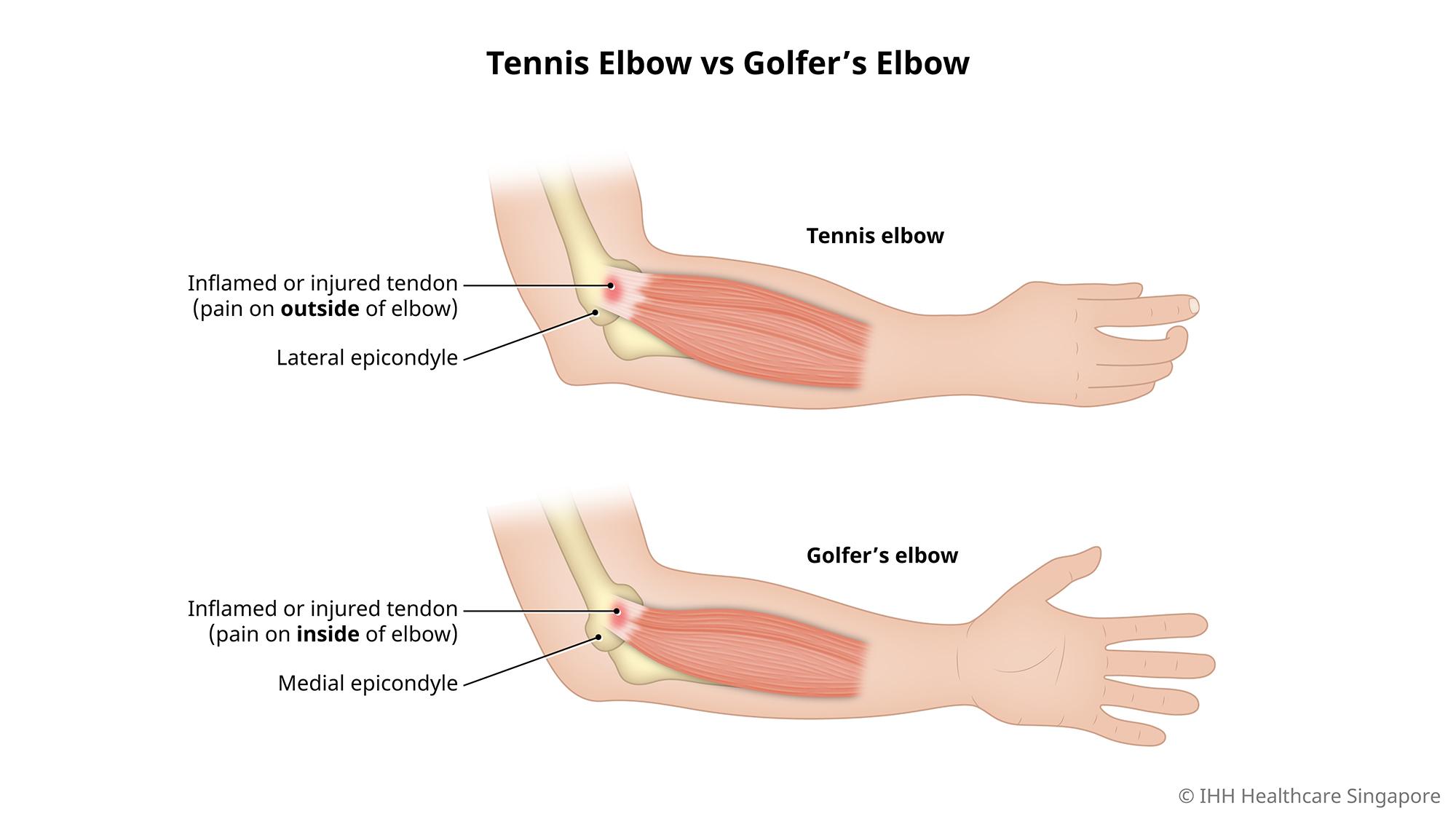
Tennis Elbow (Lateral Epicondylitis)
What is a tennis elbow?
Tennis elbow, or lateral epicondylitis, is typically caused by the same motion as a tennis downstroke. In this condition:
- The muscle of the forearm becomes weak from overuse.
- The forearm muscle rubs against bony bumps in the forearm when the elbow bends and straightens, which can cause wear and tear over time.
- Small tears and inflammation may occur near the bony lump (lateral epicondyle) on the outer part of the elbow.
Tennis elbow pain is typically felt in the tendons of your forearm muscles, which are connected to the outside of the elbow. Likewise, pain can be felt in the forearm and wrist.
What are the symptoms of tennis elbow?
In general, tennis elbow symptoms are similar to golfer’s elbow symptoms, except tennis elbow causes pain on the outside of the elbow.
Other tennis elbow symptoms include pain:
- Spreading down your arm towards your wrist
- On the outside of the upper forearm, below your elbow
- When gripping or holding objects
- When fully extending your arm
- When twisting your forearm
- When bending your arm
- When writing
What causes tennis elbow?
Tennis elbow is typically caused by the motion of a tennis back stroke. Overuse (usually from improper technique) can lead to:
- Inflammation and injury in the forearm muscles
- Small to large tears in tendon fibres that attach the forearm to the elbow, causing pain and swelling.
What are the risk factors for tennis elbow?
Factors that increase your risk of tennis elbow include:
- Occupation. If your work requires regular repetitive movements of the arms and wrists, you are at high risk of developing tennis elbow. Painters, carpenters, plumbers, cooks, and butchers are prone to tennis elbow.
- Hobbies. Those who are active in racquet sports such as tennis, squash or badminton have a greater risk of developing tennis elbow. The risk is higher if you do not practise proper stroke techniques.
- Age. Tennis elbow is common in people between 30 – 50 years old.
What are the complications and related diseases of tennis elbow?
Most patients experience improvement and pain relief within 12 months of conservative treatment. However, there is still a risk of developing complications such as:
- Chronic pain if the condition is left untreated
- Tendon rupture due to repeated steroid injections
- Recurrence of injury upon resuming normal activities.
This page has been reviewed by our medical content reviewers.
Need help?
For enquiries, please call
+65 6250 0000 (Orchard) or +65 6898 6898 (Novena)
For appointment bookings, please WhatsApp
+65 8111 7777 (Orchard) or +65 8111 5777 (Novena)
 Brain & Spine Care
Brain & Spine Care


